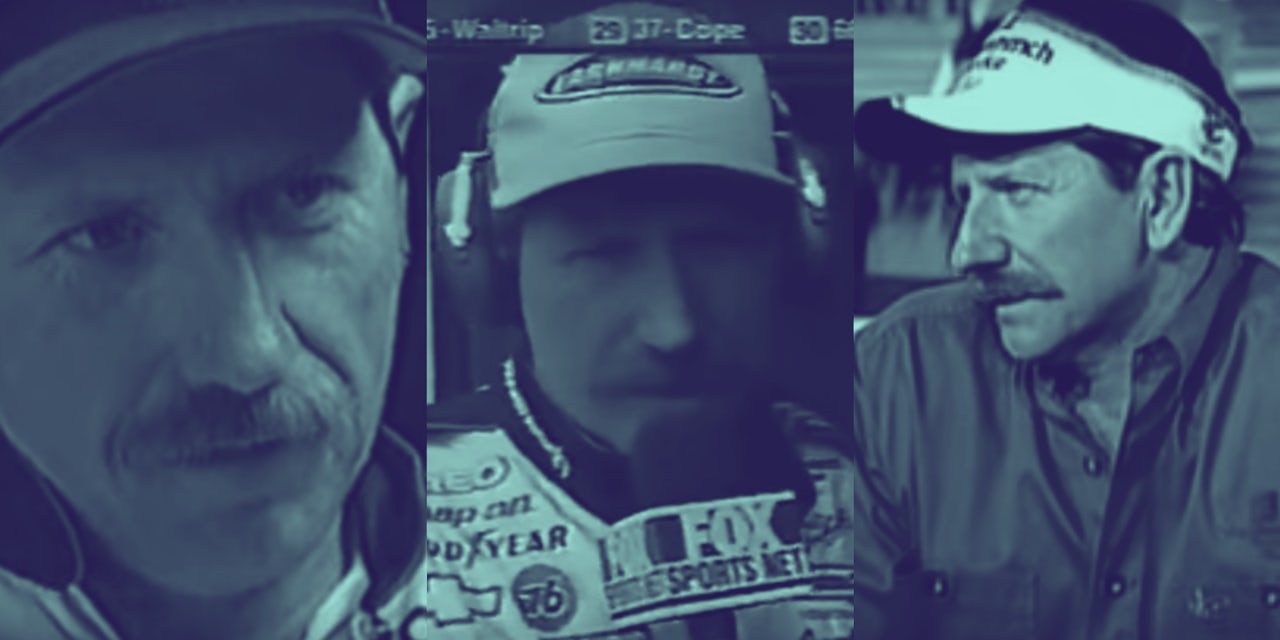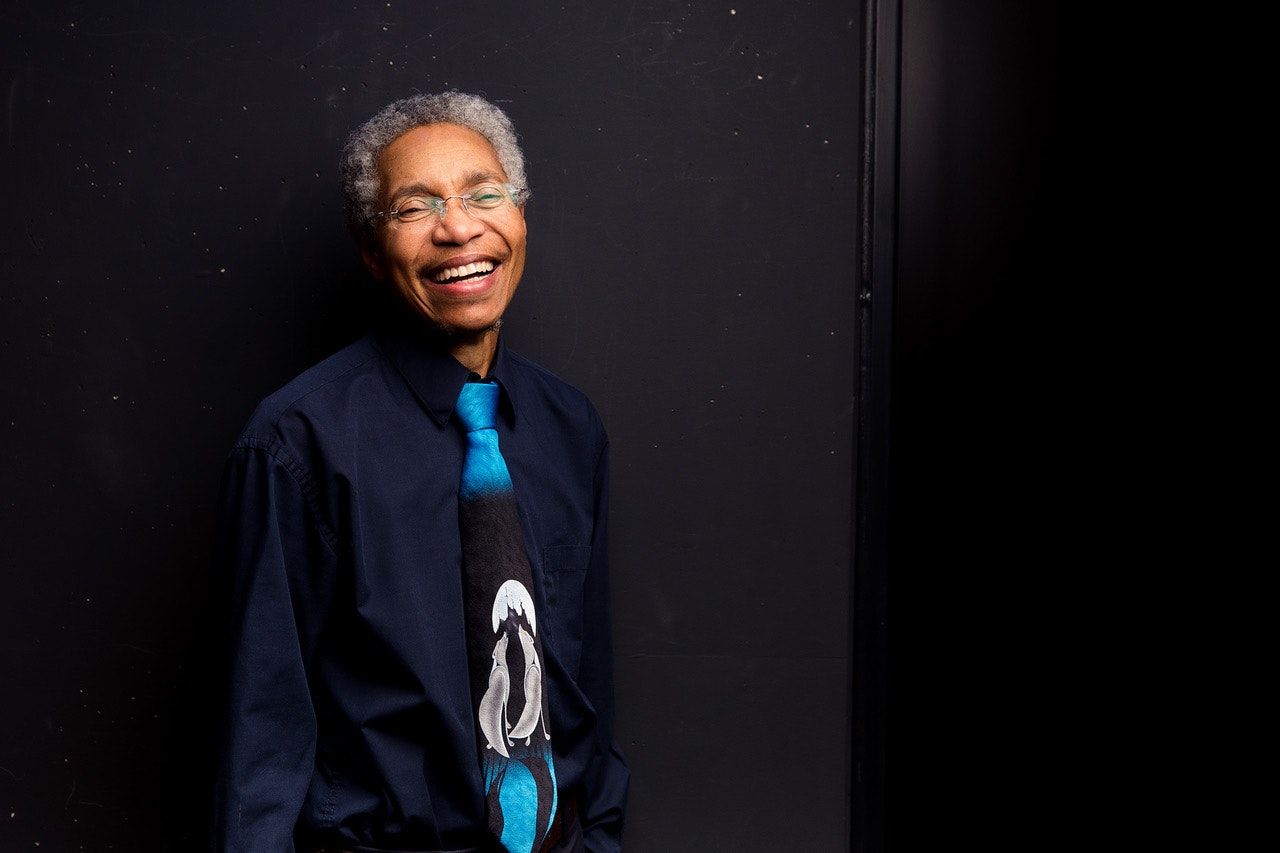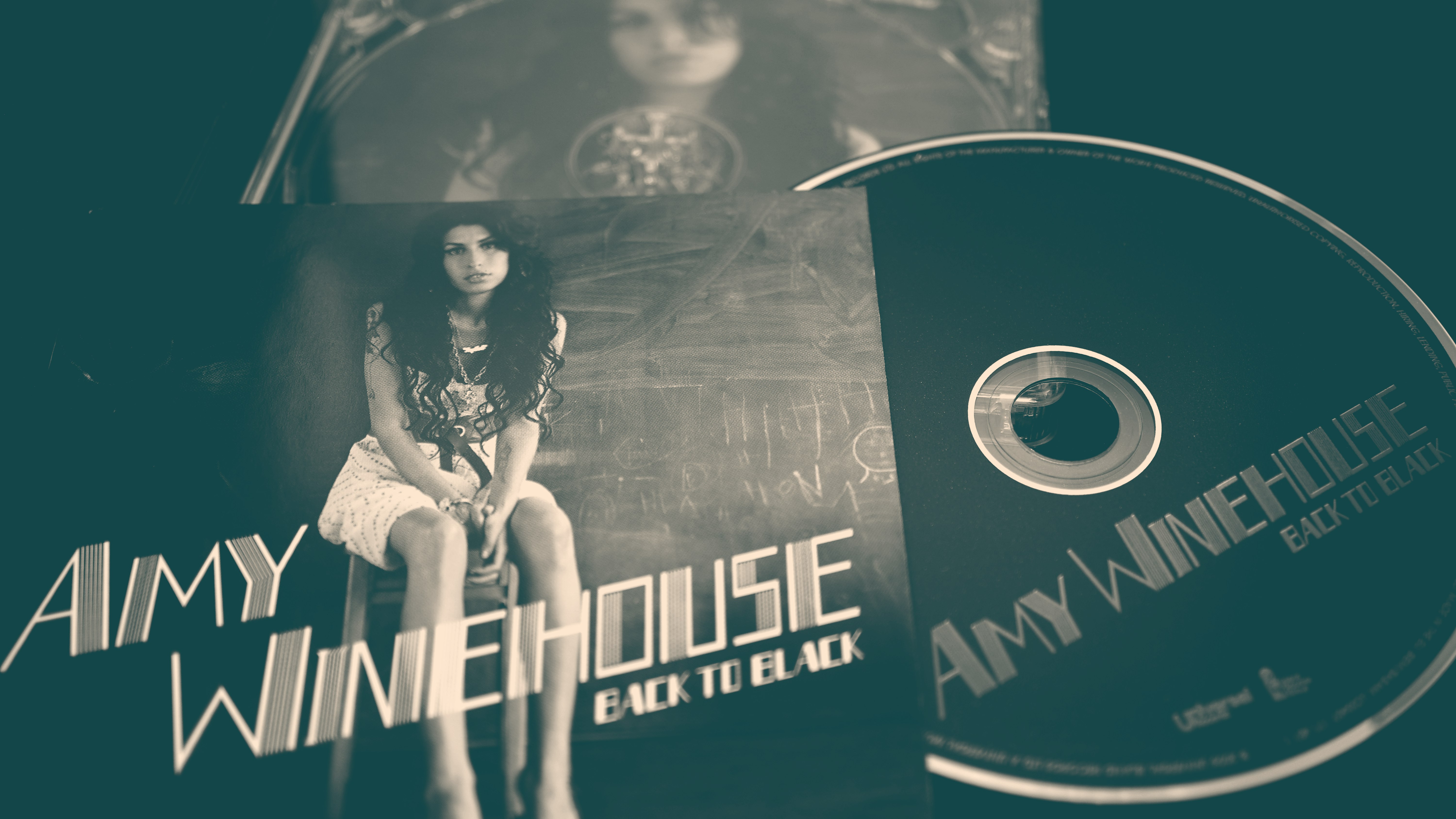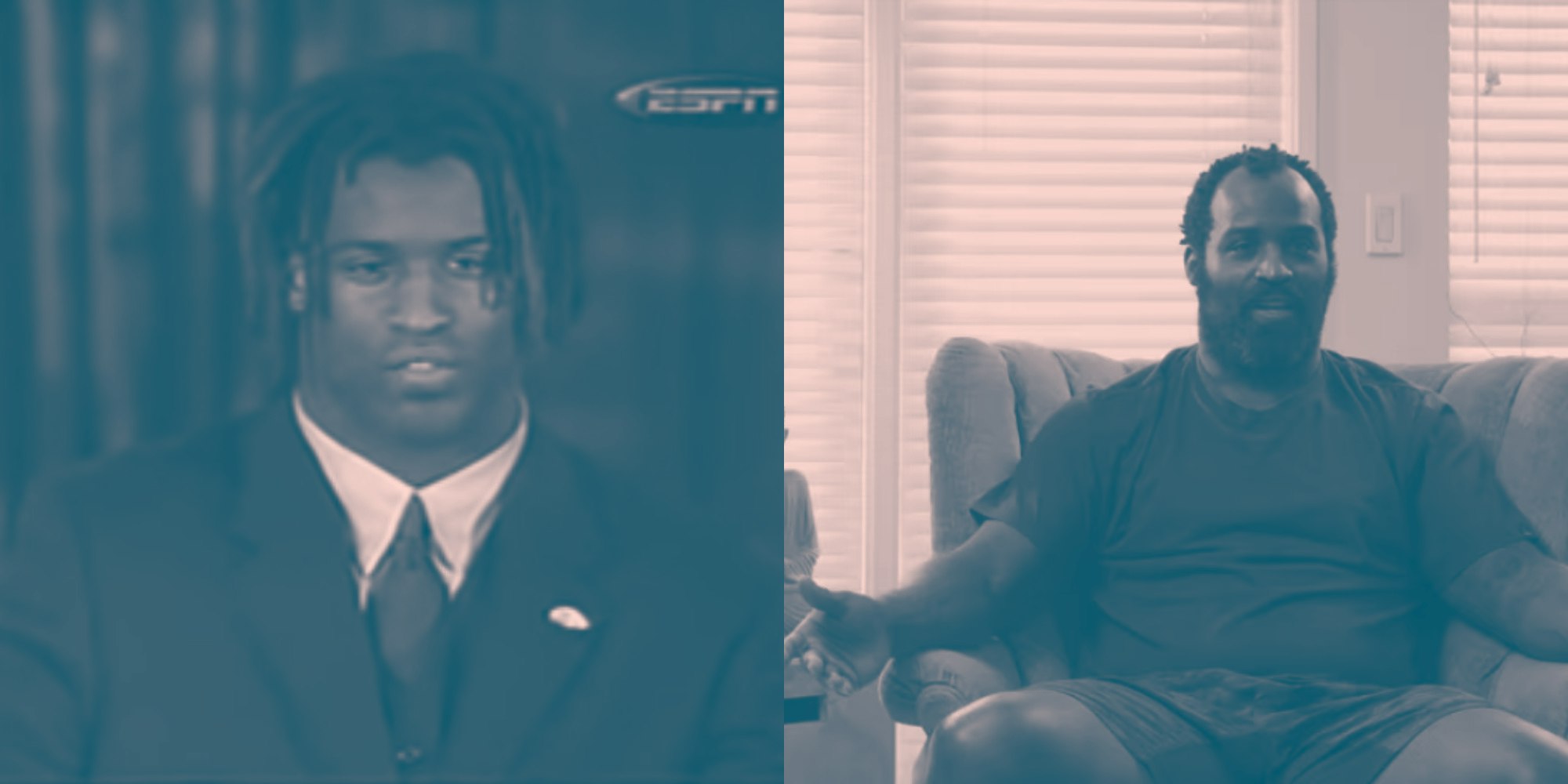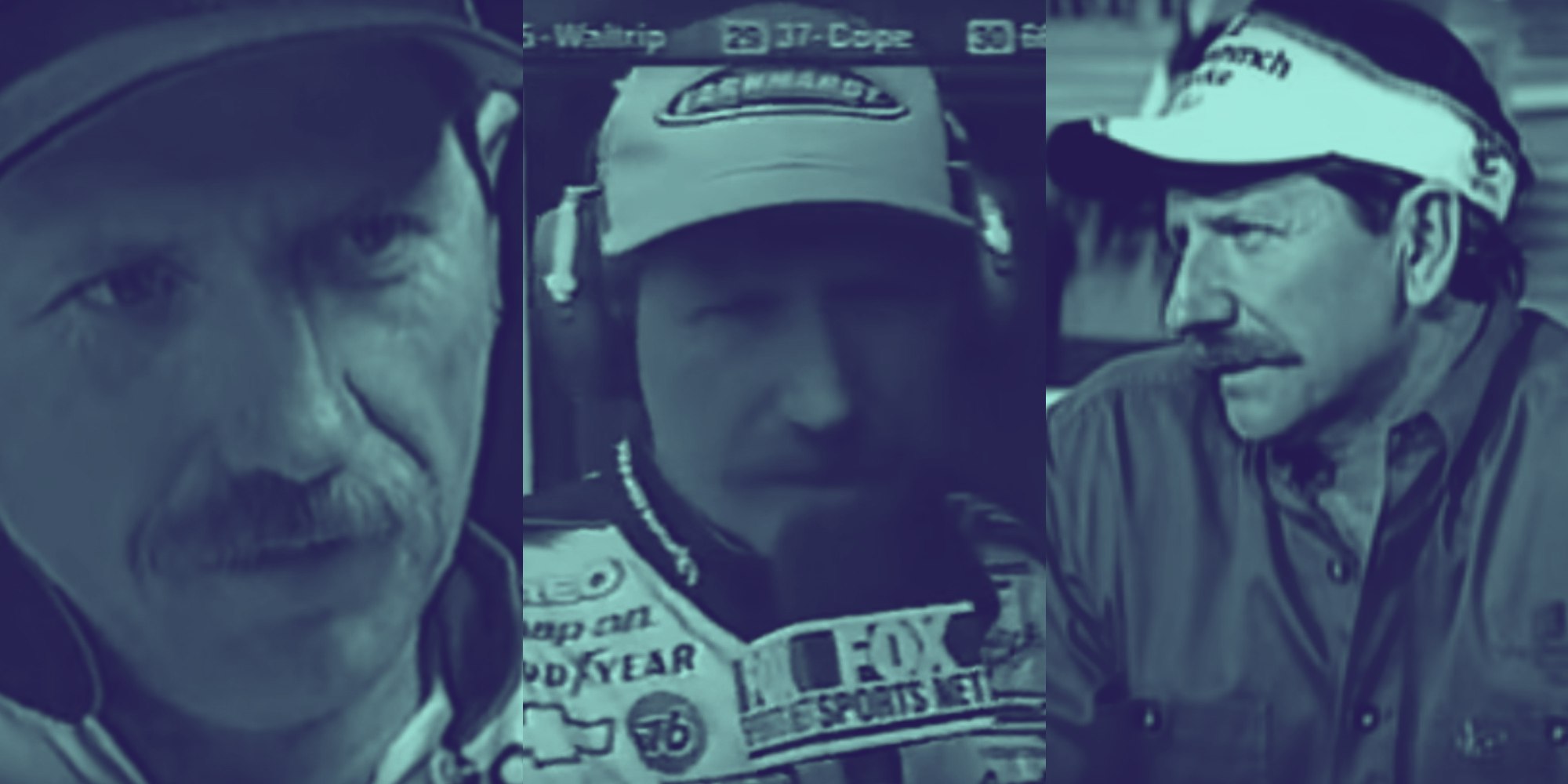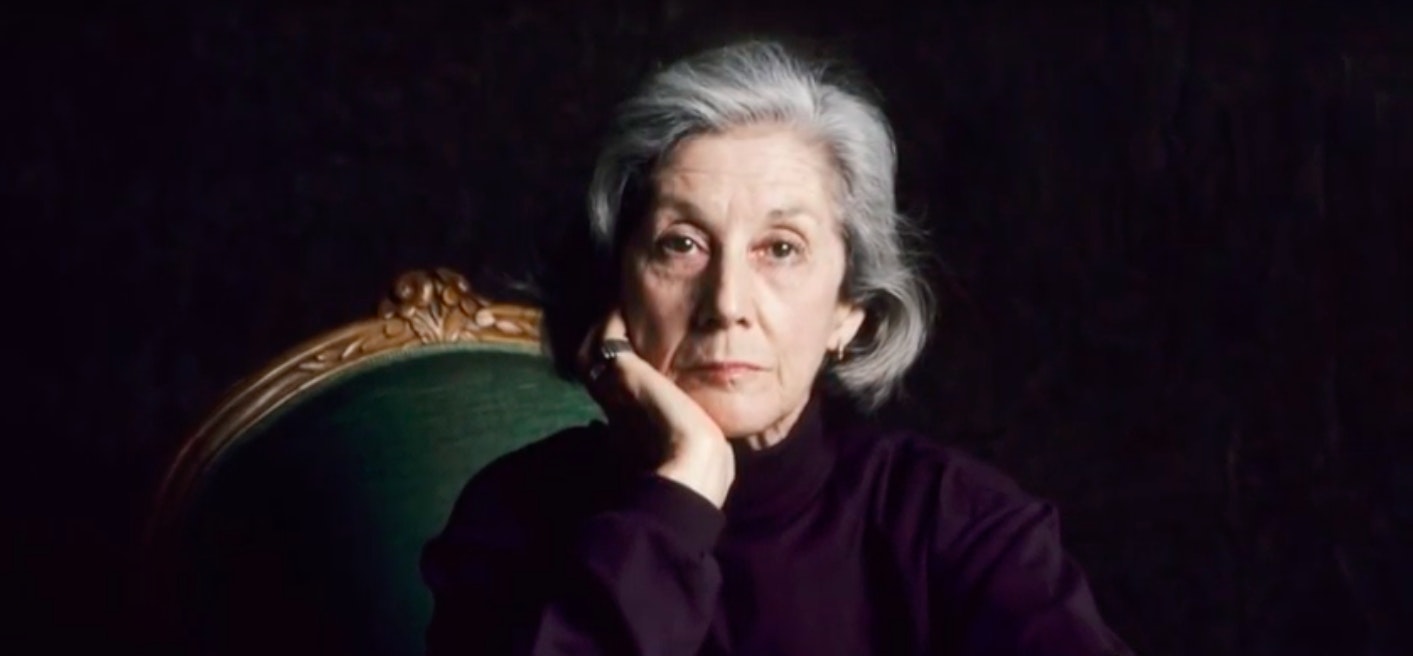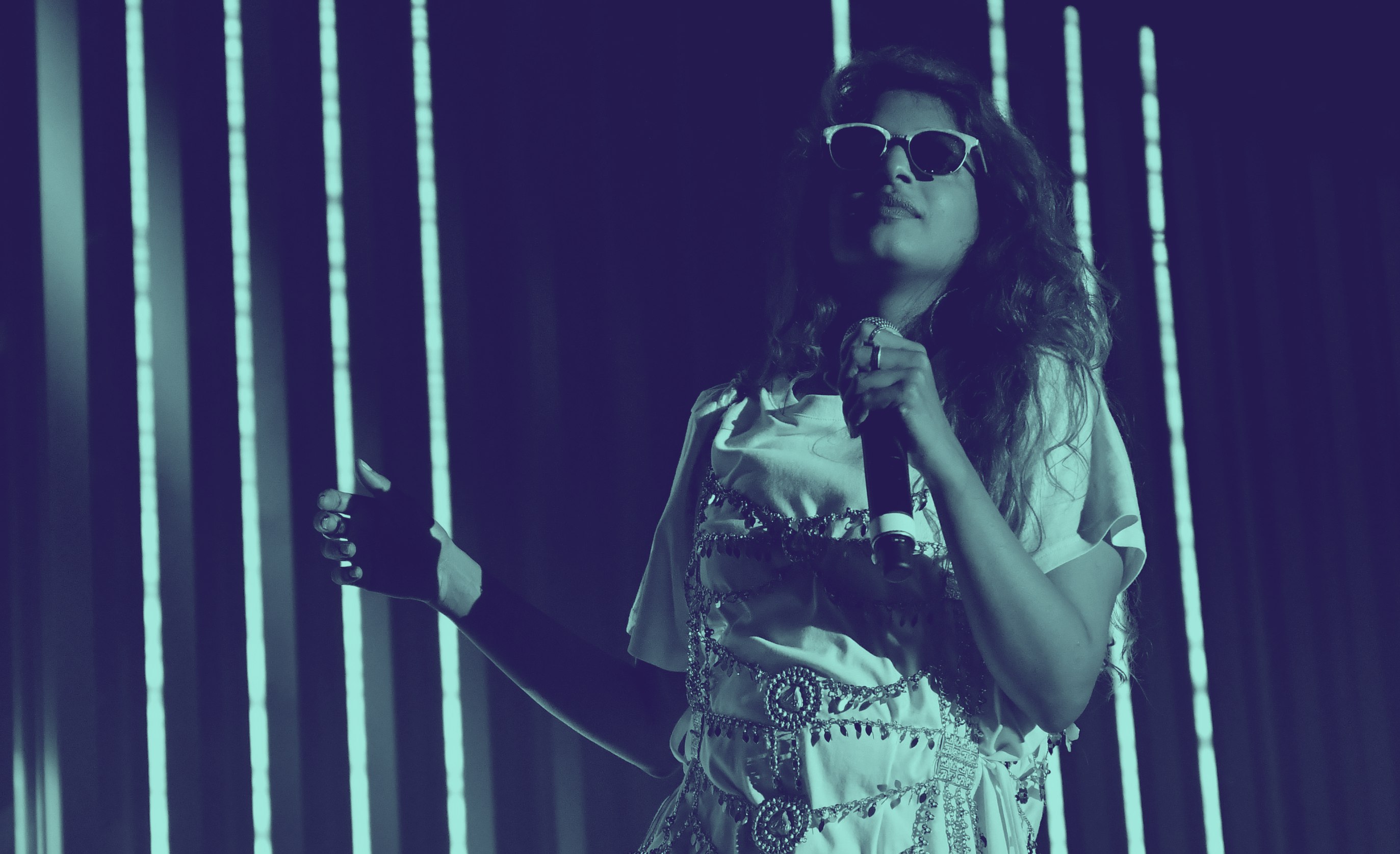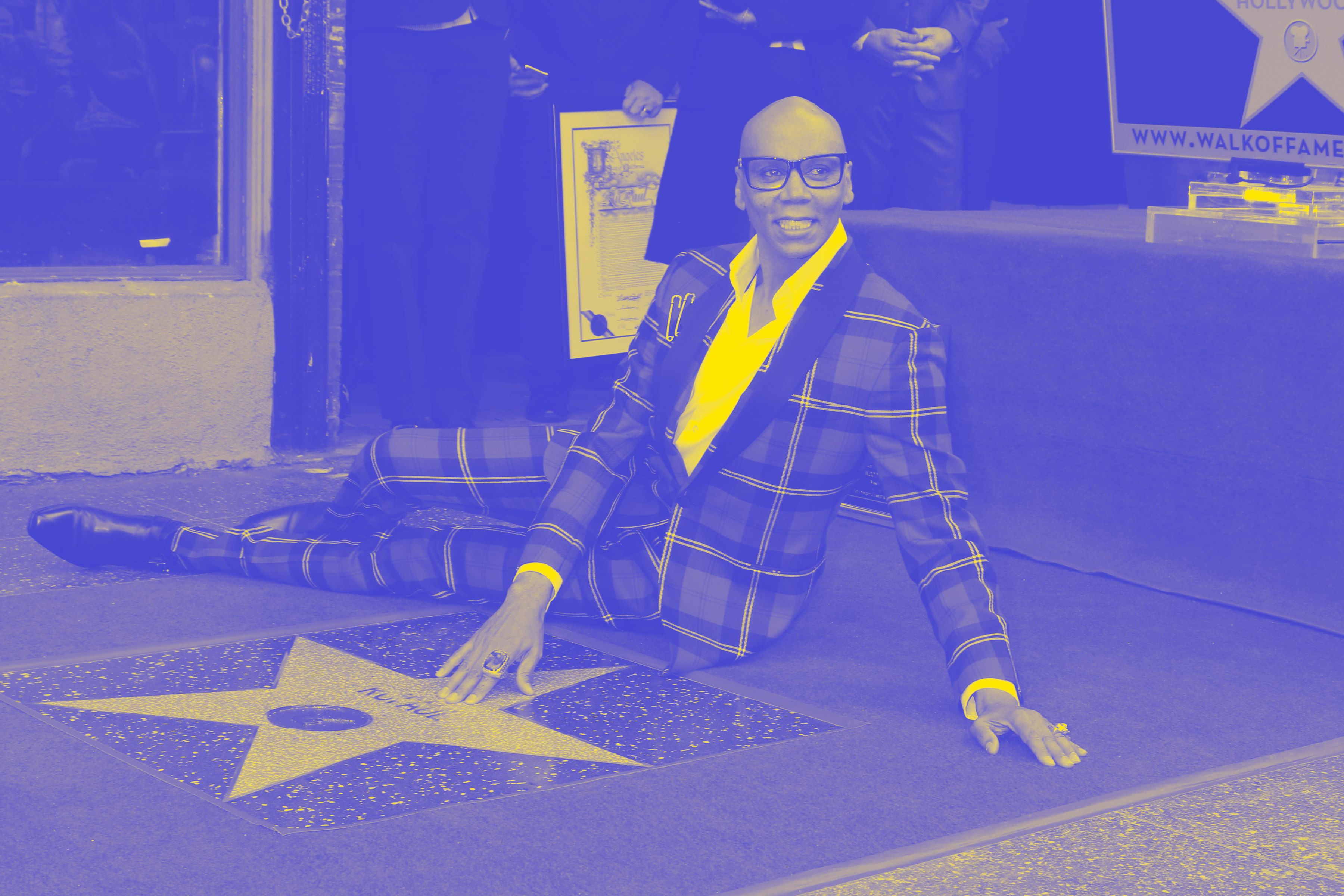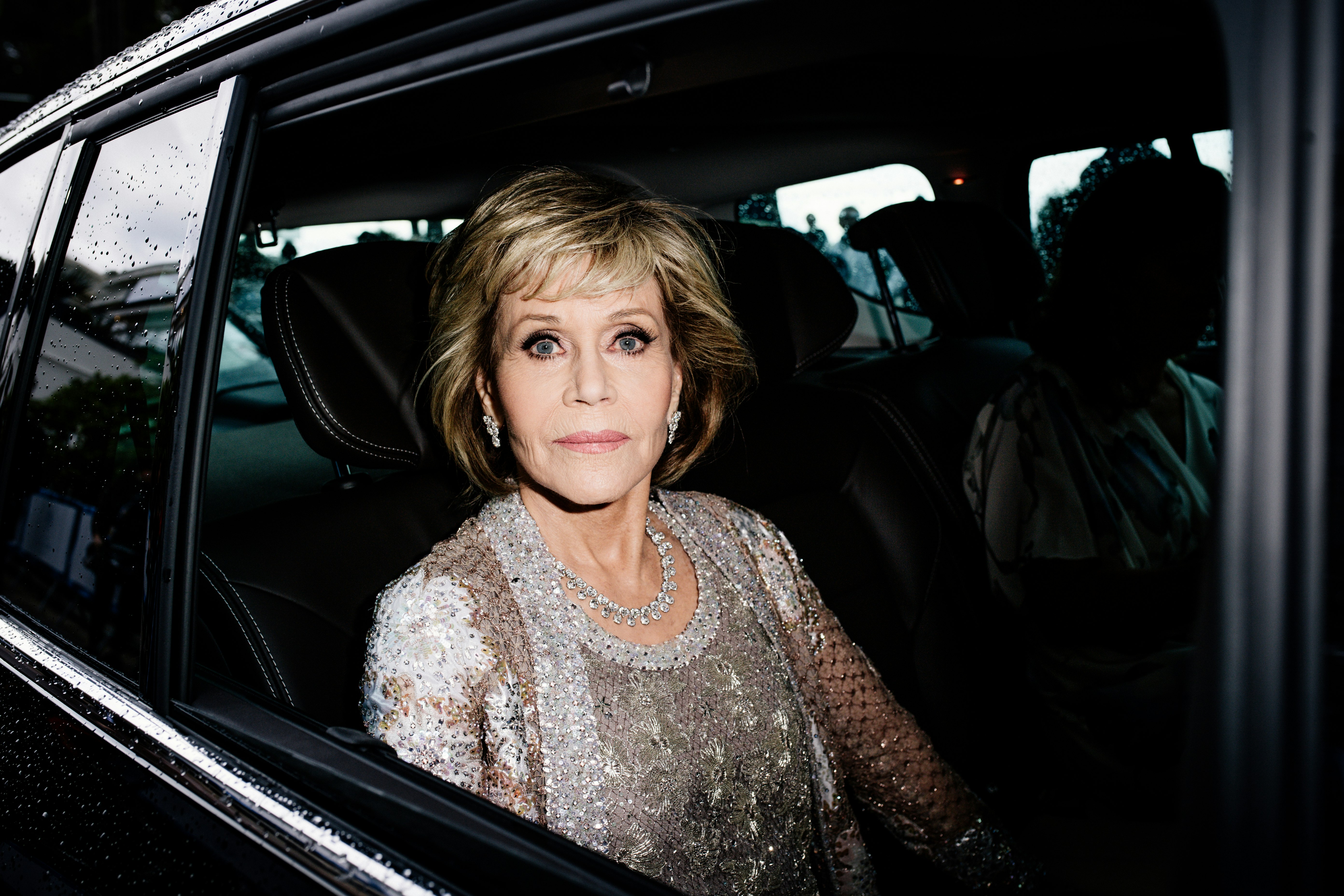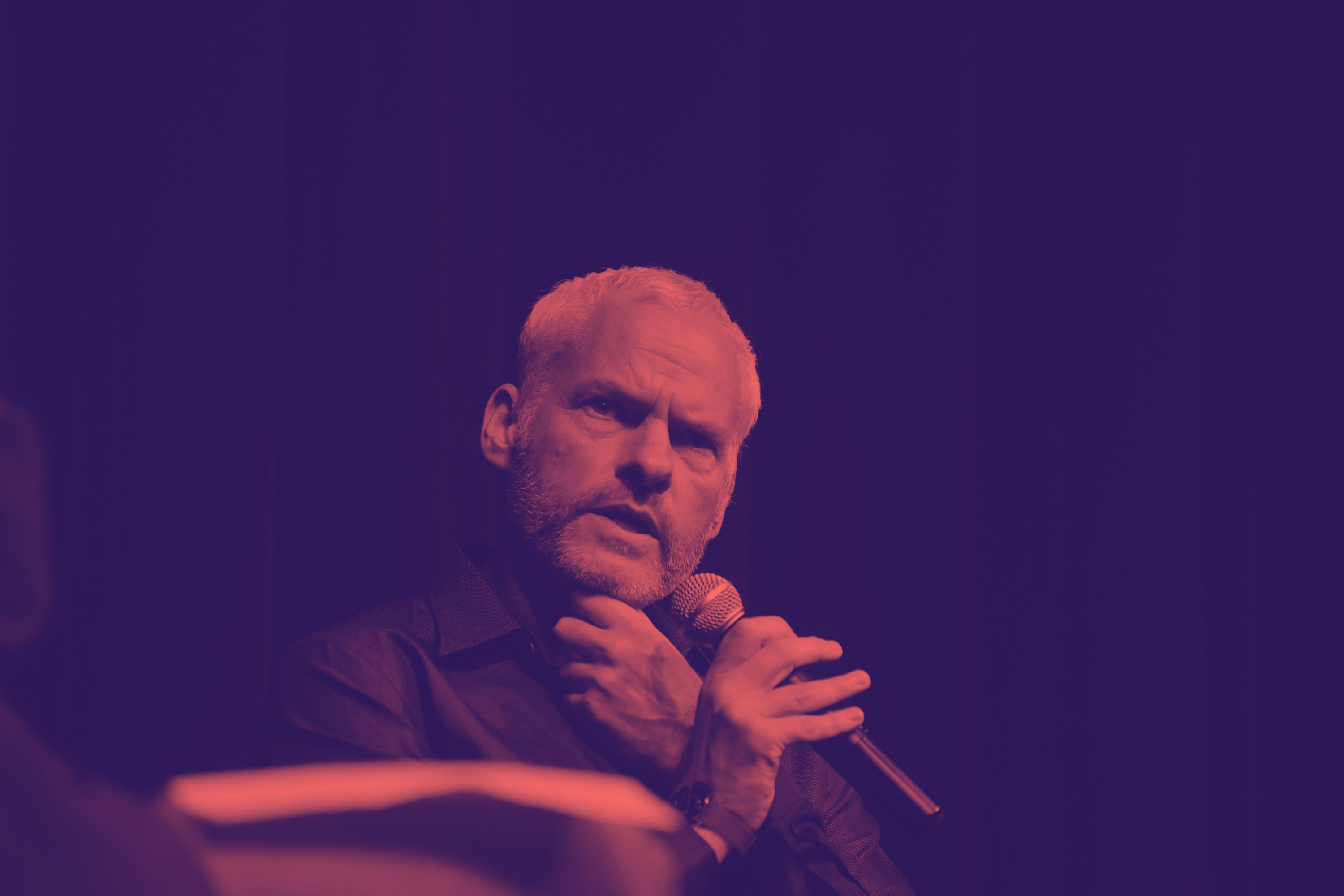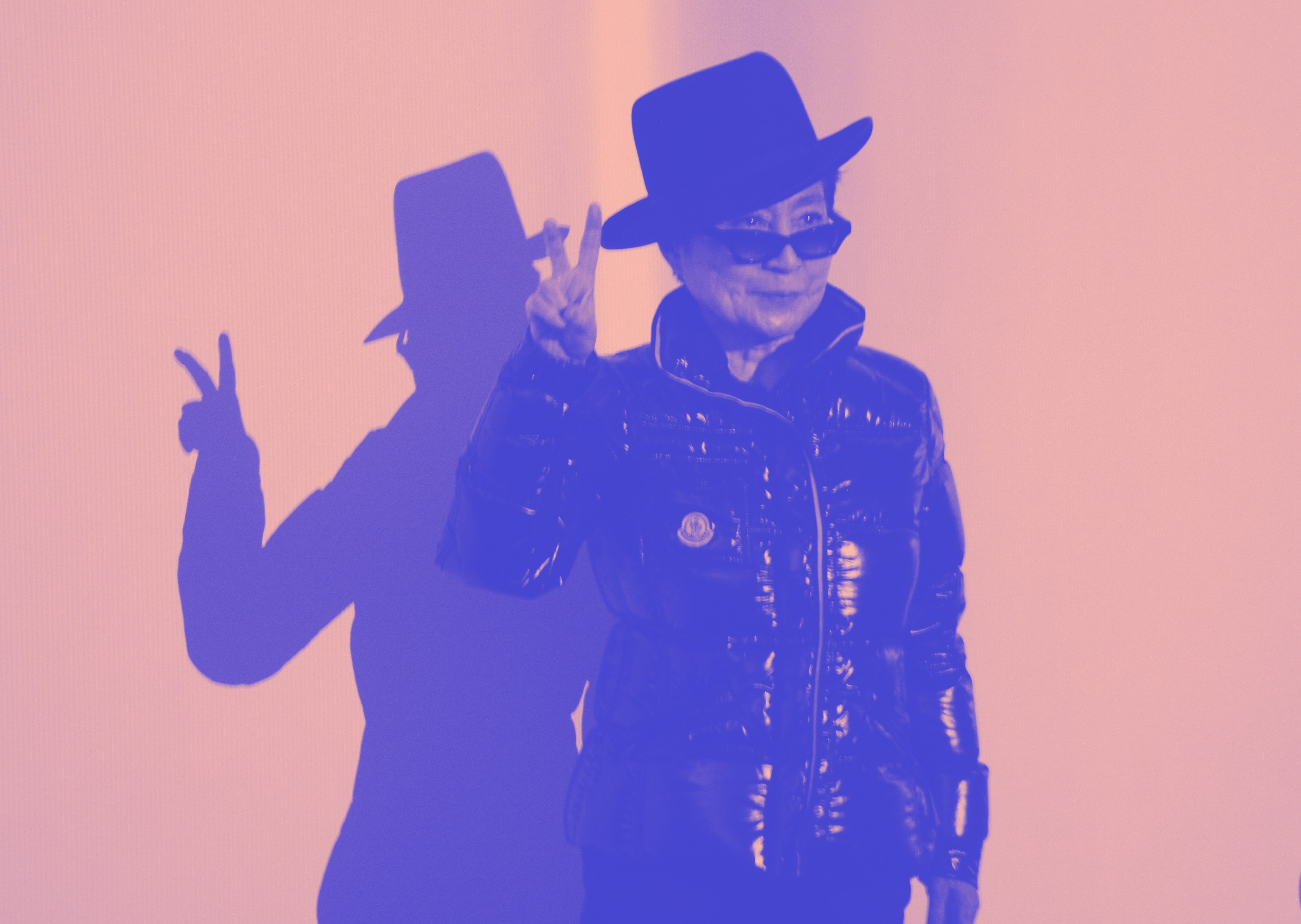Very Intriguing Person
is a series about people who fascinate us, for better or worse.
I grew up in the South, where the legacy of the late Dale Earnhardt Sr. hangs around like a shadow, even if you weren’t the type to book it to the speedway after Sunday service. My childhood home is only a few minutes from the Texas World Speedway, one of the seven longest racing tracks in country. I went to college at the University of Tennessee, only 90 minutes from Bristol Motor Speedway, one of NASCAR’s signature short tracks. It didn’t matter if stock-car racing wasn’t your bent — you could smell the singed rubber without seeking it out.
I was born at the tail-end of the Earnhardt Sr. era. NASCAR drivers generally have longer careers than other athletes, but Dale was rare for his persistence and dominance across decades, upon debuting at 1975’s Winston Cup in his native North Carolina. NASCAR is a little more complicated than the eye lets on — scores are determined not by who crosses the finish line first, but a combination of points awarded based on your position during each lap and your place at the end of the race. The formula changed a little in 2004, when NASCAR introduced a playoff format, and again in 2017, when each race was divided into “stages,” with scores awarded based on your place in each stage.
The point is that the best drivers aren’t always at the head of the pack when a race is over, and that Dale’s relentless and oft-reckless style made him necessary viewing, even if it didn’t look like he was winning. If there’s one single stretch of blacktop that best represents Earnhardt’s style, it’s the infamous “Pass in the Grass” at the 1987 Winston Cup All-Star Race — “Awesome” Bill Elliot bumps Dale into the track’s grass infield, but Earnhardt plows ahead, charging through the grass and back onto the speedway to win the race. Or there’s the 1997 Daytona 500, when Dale’s car flipped and he was escorted away by an ambulance, only to get back in his steed and rejoin the race after a commercial break. Or the time in 1986 when he climbed out of his car to wipe mud off the windshield while he was still in the middle of the race.
That driving style endeared Dale to some, but it made him hated by just as many. You had to have an opinion on Earnhardt. In some Southern households, owning a Pepsi cup branded with the face of “Yankee” upstart Jeff Gordon, one of Dale’s younger rivals and a phenomenon in his own right, was a little like putting an Al Gore bumper sticker on your pick-up. During his career, Dale also had a reputation for being something of a dirty driver, determined to weasel his way into every gap in the pack, no matter the danger to himself or others. It was that spirit that helped bring NASCAR to a more mainstream audience than it had ever enjoyed; it was that same spirit that cut Dale’s life short in the winter of 2001, when he smashed into a wall on the final lap of the Daytona 500. After his death, everything changed. Driving made Senior a legend, but death made him an icon. The number 3 and that iconic bushy mustache can still be seen to this day almost anywhere NASCAR fans assemble. As the popular refrain goes: “Raise Hell, Praise Dale.”
Even so, I hadn’t thought about him for awhile, until my interest was recently rekindled by a Facebook meme page called “The Ghost of Ol’ Dale Earnhardt.” All the memes are pictures of Dale with leftist viewpoints as captions; atop images of Dale toting a rifle in a tree, showing off a champion bass, or flashing his winning smile are things like, “To make a thief, make an owner. To create crime, create laws.” and “Capitalism is a Moloch that requires human sacrifice, and its alienation is killing us.” This one is maybe my favorite:
It’s an unexpected pairing, a white Southern hero and Communist agitprop, but somehow it makes sense. As a populist hero — a working man’s man, a “People’s Champ” — there’s something inherently political about Dale. His driving is meant to speak for the working class in a way it cannot speak for itself; something of our own fury and fervor is represented by his refusal to conform and the way he rode every machine beyond the limit.
Before he was The Intimidator or The Man In Black, Dale was the son of Ralph Earnhardt, a factory man who cut up his punch card to scrape out a living racing on every track he could. Only one road in life made sense for Dale. He drove at a pivotal juncture for NASCAR, which in the 1990s transitioned from an object of regional interest to a corporate powerhouse. The Earnhardt empire — who, with support from corporate sponsors like Wrangler Jeans and Goodwrench, was one of the winningest teams in NASCAR history — was partially responsible for that transformation, along with other big-ticket drivers like Rusty Wallace and Jeff Gordon, as much corporate admen as racers. NASCAR had been a sponsor’s game for years, but Earnhardt Inc. took it one step further, retooling and reworking Senior’s image until he was synonymous with Wrangler and Goodwrench, the companies who invested in him.
There was an essential contradiction between who Dale presented himself as — the rural, rough-riding cowboy who worked his farm until the day he died — and the sports entertainment tycoon who imprinted himself on the industry. That series of contradictions — the working man who raced cars for a living, the country boy in the corporate boardroom, the farmer who struck gold — made Dale and his story irresistible to me and so many others. Even after he struck gold, Earnhardt kept himself relatable with a well-publicized sense of humor. Dale was NASCAR’s first branded driver, largely thanks to the ingenuity of his wife, Teresa. She copyrighted everything Earnhardt touched right down to his signature, and burned his name and number onto T-shirts and travel mugs. As a young kid, long before I’d ever heard the legends, I owned a die-cast set of Earnhardt-approved Hot Wheels, one black, one blue and yellow, both proudly wearing No. 3. (I’d later add Dale Jr.’s Coke-sponsored #1 with the polar bears on the hood to my collection.)
The inherent politicization of a figure like Ol’ Dale is something that’s been sniffed out by those on both left — like the aforementioned meme page — and right. In a 2006 piece for The Nation, sports columnist Robert Lipsyte recalled how his obituary of Earnhardt became an unlikely prop in a political debate:
My story of Earnhardt’s death appeared the next day on page one of The New York Times, but his name was not in the headline. The editors decided that not enough Times readers knew who he was. They were probably right, yet another indication of the red-blue divide. The headline read: “Stock Car Star Killed on Last Lap of Daytona 500.”
In her best-seller, Slander, Ann Coulter, in an attempt to portray how out of touch and elitist the Times was, claimed that it took the paper two days to get around to covering Earnhardt’s death and, when it did, the lede read “His death brought a silence to the Wal-Mart,” which she interpreted as a disdainful swipe. (That was actually in a reaction piece several days later by Southerner Rick Bragg.)
Unfortunately, though NASCAR is viewed by a massive audience that does contain multitudes, its average viewer’s politics are closer to Coulter than Antonio Gramsci. Coulter picked up on what Dale represented to a certain demographic, and knew she could stoke their resentment. There’s a reason why the National Guard gives money to racing teams and not tennis opens. It’s probably the only sport in which an athlete could get away with being sponsored by Mel Gibson’s The Passion of the Christ.
Long before post-2016 worries about the “white working class” there was the “NASCAR Dad,” George W. Bush’s answer to the “soccer mom” of Bill Clinton’s re-election campaign. The NASCAR Dad was, or so the story goes, blue collar and beer-guzzling, and in the past had probably voted Democrat but was turning Republican. In the words of Celinda Lake, the Democratic pollster who coined the term, the NASCAR Dad was “culturally conservative but very populist.”
Even before they had a name, NASCAR Dads were a hotly sought-after voting bloc. In 1992, Clinton tried to reach potential voters before a race at Darlington Speedway in South Carolina, where he was met with jeers. In 1996, racing legend Richard Petty made a failed bid for political office. Other politicians have had more luck. In 2001, Democrat Mark Warner was a long shot in Virginia’s gubernatorial race; he spent $28,000 to sponsor a NASCAR outfit and walked with 97,000 more votes than his Republican opponent. Before the 2004 presidential election, Bush made a stop at the Daytona 500, flanked by fighter jets and the ever-dependable pipes of Lee Greenwood — we already know how that turned out. No clearer sign of NASCAR’s rightward drift is the Confederate battle flag, which still flaps over many a racing fan’s RV. It’s an ever-looming symbol of the sport’s inability to let the old ways die. Earnhardt Sr.’s traditional No. 3 has been screen-printed and stitched onto just about every kind of cloth, but it’s regularly affixed to the rebel flag.
The cultures of NASCAR and the South often excuse reactionary ideology under the guise of “rebellion,” but there’s nothing rebellious about waving a racist banner at a sporting event just because some people who lived in the same state as you lost a war 150 years ago.
Dale, a rapscallion straight out of Dukes of Hazzard and a demigod to white Southerners, might seem like a natural Confederate sympathizer ��� Charlotte Motor Speedway president once described him as “the last Confederate soldier… like one of those guys in the old silver photos from Gettysburg or Manassas.” But his real politics were, if not exactly radical, a little more complicated. In an 2015 episode of her Fast Lane Family podcast, Dale’s daughter Kelley recalled an incident that occurred in her childhood, when her father placed a bumper sticker reading “American By Birth / Southern By The Grace Of God” on the rear of his truck. The family’s black housekeeper mentioned that the sticker, which featured the Confederate flag, made her uncomfortable. Dale immediately took a pen knife and slashed the flag off his truck, leaving the expression of Southern pride while divorcing it from the region’s sour history.
By all accounts, Dale refuted the flag for the rest of his life. His son, the racer, Dale Jr. took his father’s example even further, and at many points in his career has said the flag, which is now discouraged by NASCAR but not officially prohibited, “belongs in the history books.” Junior has also voiced support for athletes protesting during the national anthem, a clear break with the rest of his company, which received praise from President Trump for its strong stance against political expression.
The cultures of NASCAR and the South often excuse reactionary ideology under the guise of “rebellion,” but there’s nothing rebellious about waving a racist banner at a sporting event just because some people who lived in the same state as you lost a war 150 years ago. A revolutionary spirit looks a little more like Dale on the track: punching the gas, pushing it to the limit, taking any chance that opened up. Dale the brand was meticulous and machine-like, but Dale the man was untamed. The South and NASCAR fit together snug as a glove — both are often disrespected, but those who love them are devoted. For acolytes of both, Dale Sr. was the good old boy they’d always dreamed of being.
But there’s a reason why he also resonates with the leftists who like The Ghost of Ole Dale. In one body, Dale Sr. joined NASCAR culture’s two warring halves: the attention to detail that it takes to win a 500-lap race, and the untamed racing style that links the sport to its under-the-table origins in moonshine running. He also brought together two parts of the South: a hard-scrabble, rough-hewn work ethic and an endless sense of determination combined with a disrespect for existing precedents. The South is a place where regressive and reactionary views often rule, but it also offers a long lineage of tradition-bucking rule-breakers: Faulkner, Dolly Parton, Andre 3000. The fiercely independent Earnhardt comes from that same stock.
There’s a reason why his legacy persists like it does: because Dale drove like he didn’t give a shit about his legacy. He drove hard and fast into the future, and always projected the image that he was never too concerned about what kind of reputation he left behind or what people thought of how he got the job done. Of course, Dale did care about his legacy — that’s why he licensed the hell out of himself. But he gave off an effortlessness that made us overlook those kinds of contradictions. Those devoted to Dale can’t ever forget him precisely because he made us think that he didn’t care how he was remembered.
